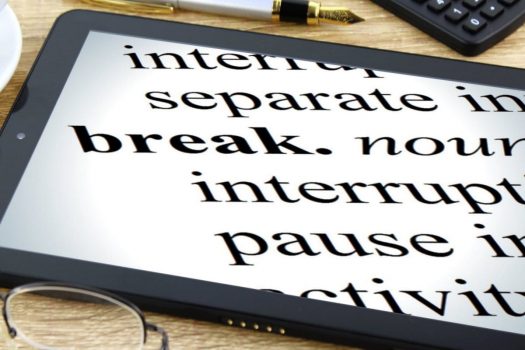by Misty Krippel, Ed.M.
Interruptions to typical daily routines can happen often. These breaks in routine can be unexpected, like when a family member comes down with the flu. They can also be expected, such as a holiday or summer vacation. Some families, particularly military families, may frequently experience a break in their routines as they move from one location to another. Such disruptions to a family’s routine can result in a brief gap in early intervention (EI) or early childhood special education (ECSE) services.
At times a break in services may occur due to concerns within the EI/ECSE agency and families may be left waiting to begin services for an extensive period of time. If a family suspects this, they should contact the agency and discuss their concerns, the established procedures, and the timeline for obtaining services. Families can also contact their local Parent and Training Information Center for additional guidance.
In this blog, we want to focus on creative activities that can be embedded into everyday activities during a break in typical routines or during a time of transition such as a move, that can help young children maintain the skills they have developed until EI/ECSE services resume.
COMMUNICATION
An interruption to the services a child receives can feel overwhelming to caregivers. They may worry that their child’s developmental progress will be negatively impacted. The following resources provide opportunities to practice communication skills in everyday settings:
- Let’s Play: This website suggests fun activities to promote early communication skills with infants and toddlers. Be sure to check out our favorite “The Power of Peekaboo.”
- Our Montessori Home: This mother, who is also a Montessori educator, has several ideas to help toddlers and preschoolers identify beginning sounds. These ideas are portable, adaptable, and use items in a child’s everyday environment.
FINE MOTOR
Fine motor skills such as grasping objects, scribbling, coloring, or tying shoelaces use small muscles, but they accomplish important tasks. There is no shortage of ideas to potentially help develop these skills in young children. Here are two we liked:
- Paper Tube Threading: Toilet paper or paper towel tubes, a hole punch, and a few straws make for a great threading activity for preschoolers to practice their fine motor skills. Bonus – if a paper tube is needed, a young toddler can practice the fine motor skills involved in unrolling a nearly empty toilet paper roll! Don’t all kids love to do that?
- Cardboard Lacing: Families who experience a break due to a move can repurpose their moving boxes using this activity and some yarn, string, or old shoelaces. If a family doesn’t have any moving boxes lying around, they can use a side from a cardboard cereal or cracker box instead.
GROSS MOTOR
Gross motor development involves large muscle groups and activities such as walking, jumping, pushing, lifting, and more. Check out the following ways to use common objects to help strengthen young children’s gross motor skills:
- Hands On As We Grow: This website has 35 gross motor skills that preschool children will love. The list includes such games as “The Floor is Lava” and “Dumpster Diving.” During a winter holiday break in routine, families could play a game of “Newspaper Throwing” and call it “Snowball Fight!”
- Tissue Paper Kicking: With the supervision of a caregiver, this tissue paper activity can be used to encourage babies to kick and strengthen their leg muscles. Wax paper, cellophane, bubble wrap, or packing paper could also be used.
PROBLEM-SOLVING
Problem-solving skills are continuously crafted throughout the lifespan. Young children need support and practice to develop these important skills. These resources can help professionals and families provide that support for children:
- Adam & Mila: This website explains problem-solving in the context of infants and toddlers and identifies activities for young children to support the development of these critical life skills. These simple activities are fun and use common toys or items.
- DIY Shape Puzzles: Repurposed cardboard and paper shapes can be used to create a simple puzzle. Caregivers can cut shapes from construction paper, magazine pages, or use plain white paper and encourage a child to color on it. Coloring the shapes incorporates fine motor skills into this activity as well.
SOCIAL-EMOTIONAL
Making friends, identifying emotions, regulating behavior, and feeling empathy for others are all a part of social-emotional development. Similar to problem-solving skills, social-emotional development is an ongoing process. Sample resources to help foster these skills in young children are:
- Mirror, Mirror: This blogger shares her ideas for using a mirror to foster social-emotional skills in infants and toddlers. Caregivers, siblings, and others can all join in the fun.
- Glad Monster, Sad Monster Book Nook: The Center on the Social and Emotional Foundations for Early Learning created a handout with several ideas for using the book Glad Monster, Sad Monster to promote social-emotional skill development. Hop on over to Pocket of Preschool for additional activities to use with this book.
Breaks in EI/ECSE services don’t have to mean a loss in skill development. Using common items and a little bit of creativity it is possible for a child to maintain the skills they have worked so hard to acquire…even over the summer or during a family move.
Image from Alpha Stock Images – http://alphastockimages.com/















